I headed off from my house one Saturday early in my biking career, drooling with excitement for the mountain bike ride I’d been awaiting all week. Then, before I had reached the trailhead, I noticed my rear tire was significantly low. I felt like I was riding through mud – on the pavement! Remembering a gas station with an air pump on my way to the trailhead, I figured I could easily pump up my tire without a wasted trip back to my house.
But, when I tried to inflate my mountain bike tire… AAACK! Foiled! The gas station had a standard car pump and, new biker that I was, I forgot my bike tires have a presta valve. A week of hungering for a mountain bike ride… RUINED! All because of a puny little valve. Oh, the angst. Do NOT let this happen to YOU!
Unless you grew up biking, most of us are so familiar with car tire valves, we assume it’s the only type of valve. In truth, car tires use what’s called a Schrader valve. It’s about the diameter of a pencil and has a tiny “button” in the center that, when pressed, allows air in or out, but holds air pressure relatively steady when not compressed.
Presta valves, on the other hand, are significantly skinnier than Schrader valves. They don’t have a button in the center of the valve and instead have an attached screw mechanism at the tip. When screwed closed, it holds air pressure in the tire. When unscrewed, you can pump air in or release air out.
Presta ValveCurrently, presta valves are the most common type of valve on high-end mountain bikes. Racers and high performance cyclists prefer them. They’re becoming increasingly common – even on mountain bikes on the low-end of the price spectrum.
Why, you ask. (Perhaps with a significant number of swear words as you kick your flat mountain bike tire or throw your useless Schrader pump.) Why use an uncommon, obscure valve that doesn’t fit a standard pump? Is it just to make mountain bike newbies suffer? Why? Why?
No, it’s not just to frustrate you.
Presta valves are generally more reliable and allow pumping your tires to a more precise pressure. By virtue of design, all Schrader valves release tiny amounts of air over time, requiring occasional “topping off”. Having a cap on the valve can significantly decrease the air loss, but it still means, at any given moment, your tire may not have the pressure you pumped it to.
A casual mountain bike rider may not know what pressure they should be riding or even notice when the pressure is off. But for high-speed riders, tire pressure can have a significant impact on speed, race performance and riding safety.
The screw on the tip of the presta valve allows a rider to close off the tube at the desired pressure and not require a cap. Barring an unnoticed leak or a puncture during a ride, the tire will now reliably hold the pressure you want.
You
can inflate a presta valve with a common air pump, such as at a gas station or portable air compressor. However, you need an adaptor that’s ridiculously small in size but huge in importance: a presta valve adaptor.
However, you need an adaptor that’s ridiculously small in size but huge in importance: a presta valve adaptor.
Here are the steps to inflate a presta valve with a standard pump:
Since more and more mountain bike tires use presta valves, most bike pumps are either universal (meaning one hole works on both presta and Schrader valves) or they have two separate holes, one for each valve type. However, you should always carry a valve adaptor when you ride for situations when a standard pump is the only option. Some cyclists do this by keeping a valve adaptor screwed on their tire valve all the time. Just make sure the valve is screwed closed before putting the adapter on!
Presta valve adapters are extremely tiny and portable. This also means they’re easy to lose. The good news is they’re fairly cheap. I usually buy a handful at a time and keep one in my garage bike tools and one in my portable tool kit for rides. Having one in your glove box isn’t a bad idea, either!
This also means they’re easy to lose. The good news is they’re fairly cheap. I usually buy a handful at a time and keep one in my garage bike tools and one in my portable tool kit for rides. Having one in your glove box isn’t a bad idea, either!
All bike shops sell valve adapters and some general sporting goods shops and hardware stores carry them as well. You can also buy valve adapters online easily and cheaply.
This simple question actually does not have a straightforward answer. The simple rule is to refer to the tire manufacturer’s specs on tire pressure that are printed on the sidewall of your tires. Consensus of riders is that mountain bike pressure should be 30 psi on the front tire and 33 psi for the rear tire. This information should serve you well if you have only a casual interest in mountain biking and are doing entry-level to intermediate trails two or three times a month.
However, if you spend a significant amount of time on your bike (and an equally significant amount of time dealing with pinch flats, blowouts or skidding out on corners), you’ll want to dive deeper into the science of bike tire pressure. DIY Mountain Bike has a fabulous, in-depth article and survey results examining appropriate bike tire pressure.
DIY Mountain Bike has a fabulous, in-depth article and survey results examining appropriate bike tire pressure.
The fastest and easiest (and cheapest) way to check your tire is with your hand. When you squeeze it, it should be hard in the center with only a tiny bit of give farther out on the tire near the treads. A hand test, however, is – not surprisingly – not very accurate!
If you want to be precise, a tire pressure gauge will be necessary. But be warned: tire pressure gauges are notoriously unreliable and the sensitive sensors are easily broken. For my recommendation, read my tire pressure gauge product review.
If you’re in a pinch (perhaps literally!), and you don’t have a universal pump or a valve adapter, you can modify a tube cap to create a functional adapter using a presta valve CAP.
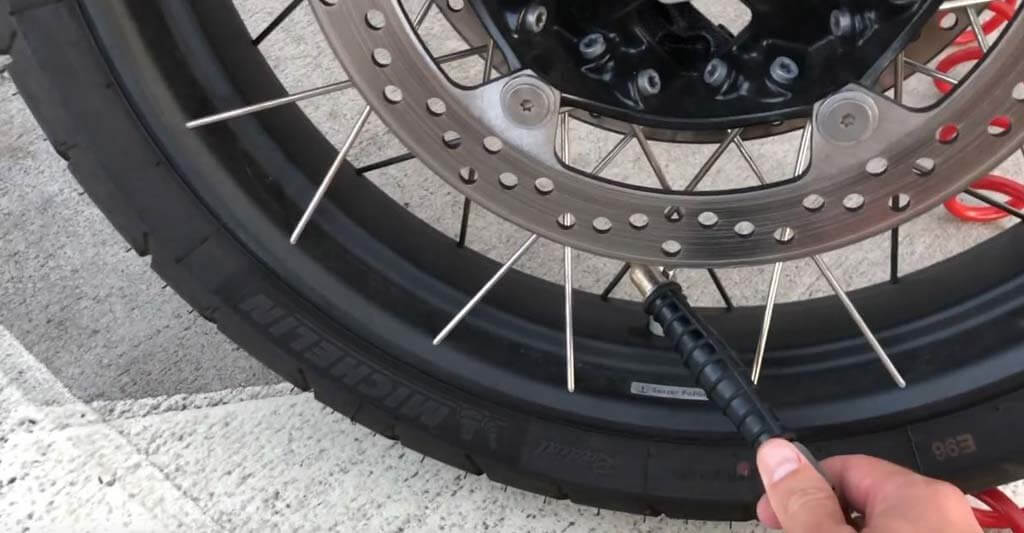 Find the place on the valve cap where it gets smaller. Cut at that spot with scissors or whatever you have that will do the trick. Throw the tiny tip away.
Find the place on the valve cap where it gets smaller. Cut at that spot with scissors or whatever you have that will do the trick. Throw the tiny tip away.Remember to screw the tire valve shut after inflating! I know you’re tired of hearing that, but it’s important.
Now that you know everything you need to about how to inflate a presta mountain bike tire, you’ll never find yourself hungering for a ride and find yourself deterred by a standard tire pump!
And don’t forget to screw the presta valve closed…
Professional writer Kat Jahnigen was 2 miles from the nearest village – and roughly 2,310 miles – from the nearest English-speaking town – when her bike tire burst. At that time, she was a college student on a bike trip across the desolate, rocky island of Crete. It suddenly occurred to her that it would’ve been good to learn some basic bike repairs before setting off on a solo bike trip.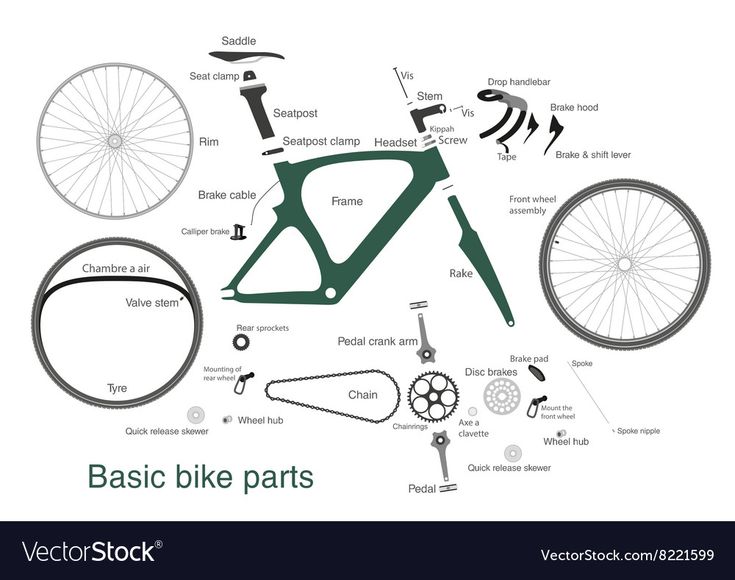
Check out Kat’s website WriteHire at writehire.net.
I’ve often cycled past gas stations and wondered whether it would be possible to fill up my bike tires using the air compressors that you see on every forecourt. So I decided to do some research to see if it could be done.
The quick answer? Yes. But it comes with a large health warning attached. Why? Well, those air compressors aren’t regulated in the same way (or at all, in fact) like gas pumps are. So, unlike with gasoline, when you pump air using one of those compressors you can never be entirely sure how much air you’re going to get with each pull of the trigger. That’s fine if you’ve got a big car tire to inflate, but when you’ve got a more delicate bicycle inner tube then it can be very easy to pop it. If you’ve ever popped an inner tube through over-inflation you’ll know that it can give you quite a shock, both from the initial bang and then the lengthy walk home pushing your bike with the flat tire.
So, if you are stuck away from home with a deflated tire and your only option is to use a gas station pump, then first check that the attendant is happy for you to use it, and second, proceed with extreme caution. Remember that an under-filled tire is always better than a popped tire.
We’ll take a look at the methods of inflating tires with Schrader and Presta valves in a moment. We’ll then look at a couple of far superior options to ensure that you never have to risk using a gas station pump.
A better alternative to a gas station pump is the Pro Bike Tool CO2 Inflator. This ultra-compact tire inflator fits both Presta and Schrader valves, is super-simple to use and will get you back on the road FAST!
Recommendations | ||
CO2 Inflator DETAILS | Bike Pump with Gauge DETAILS | Presta Valve Adapter DETAILS |
First up, you need to determine what type of valve your bike tires have. The valve is the metal tube that pokes through the wheel rim towards the center of the wheel. There are two main types: Schrader and Presta. Schrader valves are the same type as you get on car tires. Presta valves are longer and thinner and have a locking nut towards the tip. You’ll often see Schrader valves on mountain bikes and Presta valves on road bikes.
The valve is the metal tube that pokes through the wheel rim towards the center of the wheel. There are two main types: Schrader and Presta. Schrader valves are the same type as you get on car tires. Presta valves are longer and thinner and have a locking nut towards the tip. You’ll often see Schrader valves on mountain bikes and Presta valves on road bikes.
If you have Schrader valves then it is a much simpler process to inflate your tires using a gas station pump as the nozzle of the air hose will fit your bike tires:
Gas station air hoses are all designed to fit on to Schrader valves as this is what car tires have. If you have Presta valves on your bike tires you will need to use an adapter to sit between the air nozzle and the valve to give an airtight seal. These adapters are not expensive, however, you will need to purchase one in advance as they are unlikely to be available for sale at the gas station when you need it.
These adapters are not expensive, however, you will need to purchase one in advance as they are unlikely to be available for sale at the gas station when you need it.
Buy one of these Presta valve adapters now.
Then keep it safe and ready to use, in one of your jersey pockets or tucked inside your bike saddlebag.
View Details
How to inflate Presta valve with adapterThese adapters are very easy to use. Just unscrew the dust cap, loosen the Presta valve locking nut and screw the adapter on over the tip of the valve. You’re then ready to connect the air hose nozzle and (very carefully) inflate your tire. When you’re done, remove the adapter (putting it back in its safe place), tighten the valve locking nut, and screw the dust cap back on.
We’ve seen that, with care, you can use gas station air pumps to inflate your bicycle tires. The trouble is that sometimes gas stations are few and far between. If you can’t rely on having a handy gas station when you need to inflate your tires, what should you do?
The simple answer is to take a pump with you. There are lots of different bike pumps available and many are very small and powerful. We’ll take a look at two of my favorite options now. One requires some manual labor. One uses the magic of an air compressor packed into a tiny travel size. Let’s take a look.
There are lots of different bike pumps available and many are very small and powerful. We’ll take a look at two of my favorite options now. One requires some manual labor. One uses the magic of an air compressor packed into a tiny travel size. Let’s take a look.
Topeak Road Morph Pump with Gauge
Back in the day, bike pumps used to be huge things that never seemed to blow out more than an asthmatic puff of air at a time. Thankfully those days are gone and we have fantastic bike pumps like this one.
It fits onto your bike frame with the included mounting system, so you’ll never forget to take it out with you. When you need it, it works with both Presta and Schrader valves and can inflate tires up to 140 PSI. Yes, that will take some work, and you’ll probably need a Coffee ‘n’ Cake stop shortly after to recover, but then you’ll be back on the road. One clever feature of the pump is its fold-out foot and handgrip – these make it comfortable and stable to use.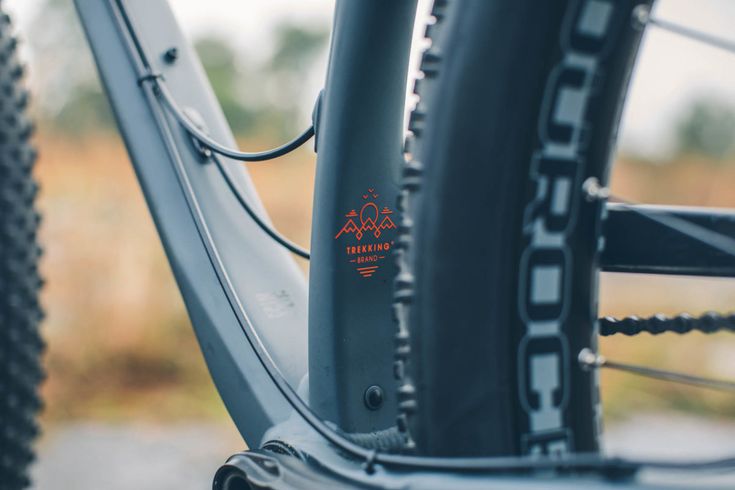
View Details
Pro Bike Tool CO2 Inflator
This is my absolute favorite piece of bike kit (possibly more than the bike itself…) This pump uses compressed cartridges of CO2 (available online or at local bike shops). These are used to blow air through the nozzle into your tires. One cartridge will inflate 1-2 tires fully, so I tend to take two cartridges and the nozzle when I go out on the bike. The kit is so tiny that you’ll forget you’ve got it with you (until you need it) and it won’t interfere with the snack-carrying capacity of your jersey pockets.
The air nozzle is easy to use and works with both Presta and Schrader style valves and replacement cartridges are easy and cheap to source online. Before I got one of these I wondered how good they would actually be. Earlier this year as I was inflating a tire in the middle of a mud bath in the midge-infested Scottish Highlands, I congratulated myself again for buying one of these.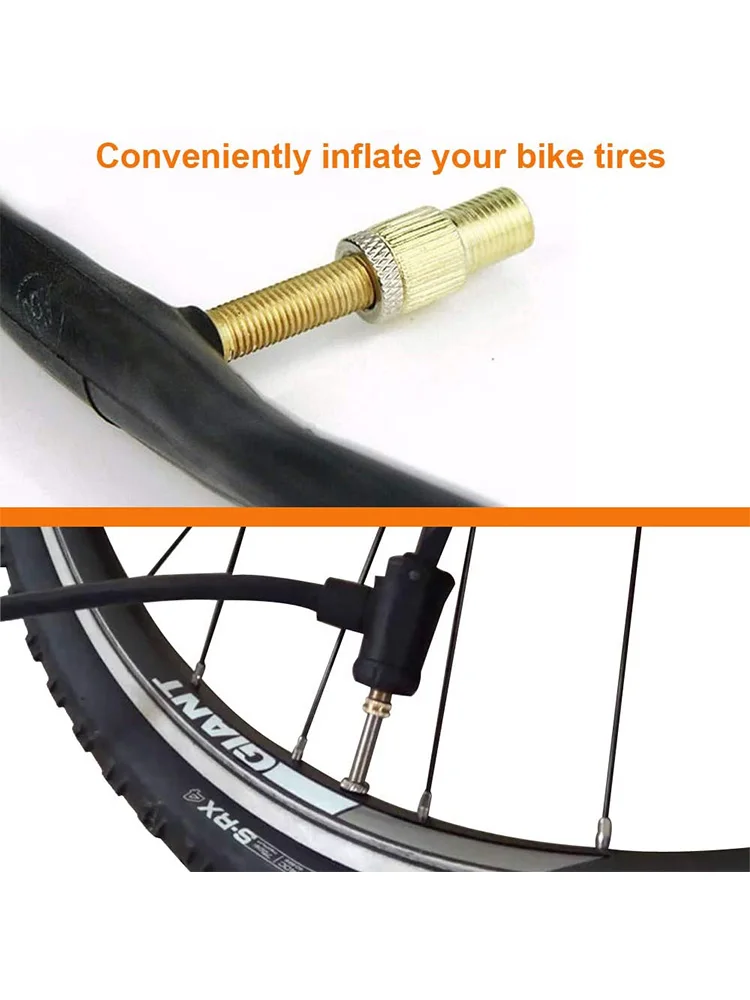 Inflation took a few seconds, there was no tiresome pumping, and I was away again pedaling to escape the flying beasties.
Inflation took a few seconds, there was no tiresome pumping, and I was away again pedaling to escape the flying beasties.
View Details
So, we’ve seen that, yes, it’s possible to pump up bike tires using a gas station air pump. I wouldn’t advise it though, because of the risks, so use it only as a last resort.
If you’ve got Schrader valves, then you’re good to go as these are the same valves as car tires have. If you’ve got Presta valves then you will need to buy an adapter beforehand.
There are better alternatives to gas station air pumps though. Ones that you can use on the many miles of road where there isn’t a gas station to be found for miles. These are designed to be used on bike tires so are safer to use.
If you’d like more detail on the difference between Schrader and Presta valves and a look at how the Presta adapters fit, then check out this video:
Happy cycling!
content
Starting point for a cyclist weighing 70 kg.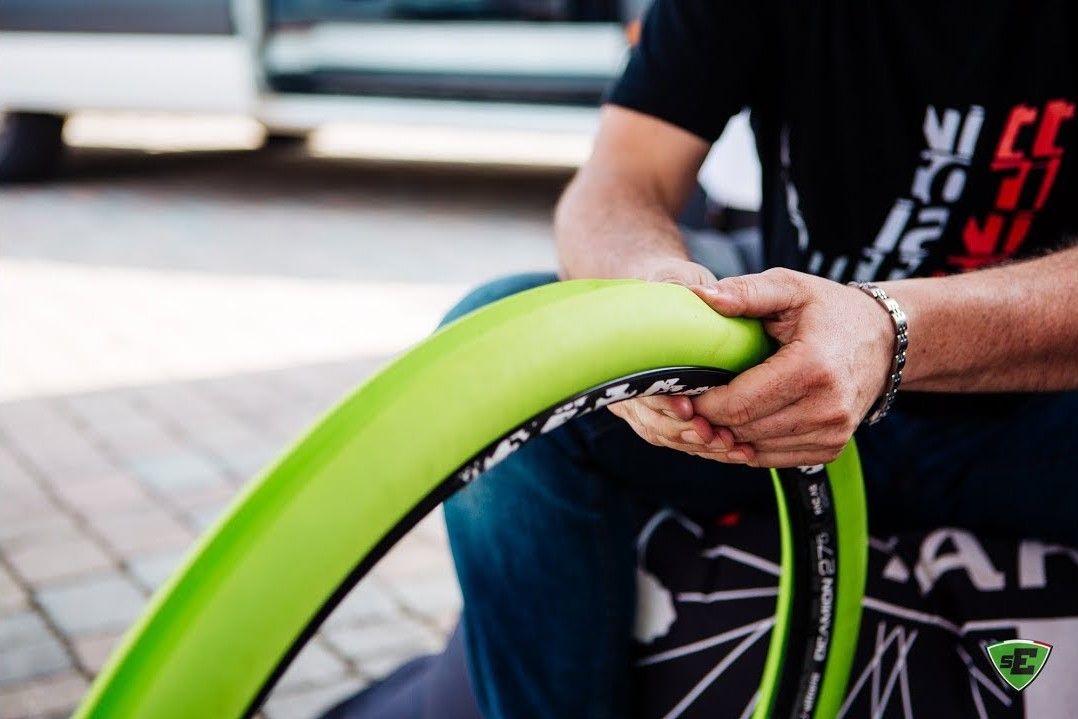
| bike type | Cover width | Tire pressure in psi |
|---|---|---|
| Road bike | 25 mm | 100 |
| Road bike | 28 mm | 87 |
| gravel bike | 35 mm | 65 |
| MTB | 2 in. (50 mm) | 44 |
For example, on road bikes it is usually between 6 and 9 bar. It is also important to consider the distribution of weights. The pressure on the front wheel is always 0.5 bar less than on the rear.
The hand pump has a plastic or fiberglass piston. With the translational movement of air, it presses the walls of the glass to the cylinder, thus forming a seal against its own valve. Thus, this piston can force air into the tire through the hole at the far end.
“Recommended cold tire pressures can be found in the vehicle owner's manual and on the tire label.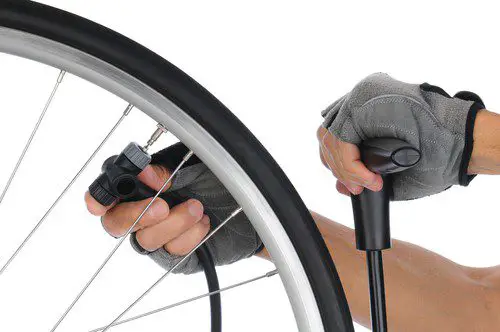 Typically, it's 30 psi for a small car, 36 psi for a medium car, and 42 psi for a large car."
Typically, it's 30 psi for a small car, 36 psi for a medium car, and 42 psi for a large car."
The PSI value corresponds to its name in English Pound-force per Square Inch, which in Spanish translates as pounds per square inch. It is the most widely used unit of tire pressure, especially in English-speaking territories.
Wide chamber tires (2.3 and up): 28 to 30 psi - 1.9 to 2.1 BAR. Wide tubeless tires (2.3 and up): 26 to 28 psi - 1.7 to 1.9BAR. Thin tubeless tires (2.25 or less): 27 to 28 psi - 1.8 to 1.9 bar. Fat bike tires (4.0 and up): 7.5 to 22 psi - 0.5 to 1.5 bar.
A trekking bike is a bike designed for more or less long raids and is a very popular discipline today: it allows you to ride alone or with several people for a day, a week or several months on various terrains.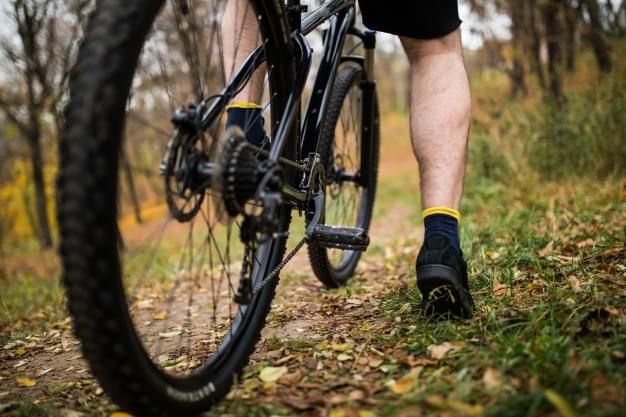
If we talk about tubeless, then the pressure in our wheels should be lower than if we had a tube. For thin tires (less than 2.2), the pressure should be around 1.8-1.9 bar, and for wide tires (greater than 2.2), the pressure should not exceed 1.75-1.8 bar.
When the piston rises (takes air), we only let outside air through. When we lower the piston, the valve that communicates with the external environment closes, and the one that communicates with what we want to inflate opens. When we raise the piston, air enters; when we lower it, we push it out.
The bicycle pump is a suitable technology consisting of a device for pumping small flows by mechanical action with minimal effort, as when pedaling on a bicycle.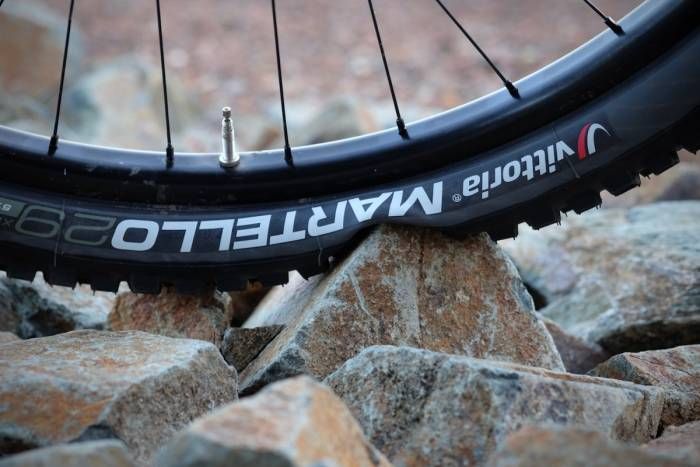
On the other hand, if the tires allow more air to pass than the manufacturer recommends, the sidewalls will not be supported, the wheel will wear unevenly (resulting in reduced tire life), and the tire will have less grip, requiring more stopping space. and also …
All vehicles have a tire pressure label. It is also most commonly found on a label on the driver's door and may appear on the gas cap or in the vehicle's owner's manual. This is the correct way to test it for accuracy.
Remove the air valve cap from the tire by unscrewing it (counterclockwise). Press the tire pressure gauge against the open side of the nipple. You will hear air hiss (this is normal). Look at the air pressure sensor.
Look at the air pressure sensor.
PSI (pounds per square inch) is a unit of pressure that is equal to 1 psi.
The PSI value in pressure refers to pounds per square inch (pounds per square inch, as it is abbreviated in English). It is one of the most commonly used units of pressure, although not the only one: other units are used, such as the bar, which is equivalent to 14.5 pounds.
Note: 35 psi is the air pressure assigned to "maximum load" tires with "standard" load, and 41 psi. inch for tires with "extra load".
If we don't have a pressure gauge to get the exact pressure, we can check by pressing on the sides of the tire with our hands or by applying body weight to make sure the tire doesn't deform much. Measurements are usually made in bar, kg, PSI, kPa (kilopascals)... 1 bar is equal to almost 1 kg, 14.504 PSI and 100 kPa.
Measurements are usually made in bar, kg, PSI, kPa (kilopascals)... 1 bar is equal to almost 1 kg, 14.504 PSI and 100 kPa.
AT 65 psi COLD" indicates the maximum tire load range and the corresponding maximum cold pressure.
This exercise consists of lifting the pelvis while lying face up on the mat. Maintaining this posture, we perform a rotational movement of the legs, as if pedaling on an imaginary bicycle.
Road bikes are ideal for long distances and high speeds with a lighter frame and performance-oriented components.
Our selection of the best travel bikes

These types of bicycles are designed for urban use and combine the characteristics of mountain and road bikes, hence their name. They are ideal as a means of transportation, for sports or just for walking.
The vast majority of professional road cyclists like to race with 40mm or larger wheels. This measurement refers to the high profile of the wheel, ideal for driving at high speeds on flat terrain.
An air pump is a type of fluid displacement machine specifically designed to work with air. Therefore, it is a compressor, a heat engine (not a hydraulic engine), which changes the density of a liquid by changing its pressure.
With car tire inflation, also known as an air compressor. There are countless suggestions that can save you from panic. Proper tire pressure guarantees optimal traction and even helps to reduce fuel consumption.
There are countless suggestions that can save you from panic. Proper tire pressure guarantees optimal traction and even helps to reduce fuel consumption.
Remove the tire valve caps. Use the air pump to inflate the tires with air. You can find air pumps at the gas station. Inflate tires when they are cold.
The American or Schrader valve is the thicker of the two as it is more resistant to abuse and is regularly found in the chambers of inexpensive cars, motorcycles and bicycles. Both foot pumps and compressors are compatible with this type of valve.
Unlike Presta, Schrader works like a check valve. That is, it passes air in only one direction. The hinge or stem is spring loaded to hold it in the closed position and is opened by airflow from the inflator.
Low profile tires also provide better “touch to the car”, the driver has better control of the car and can better predict its behavior.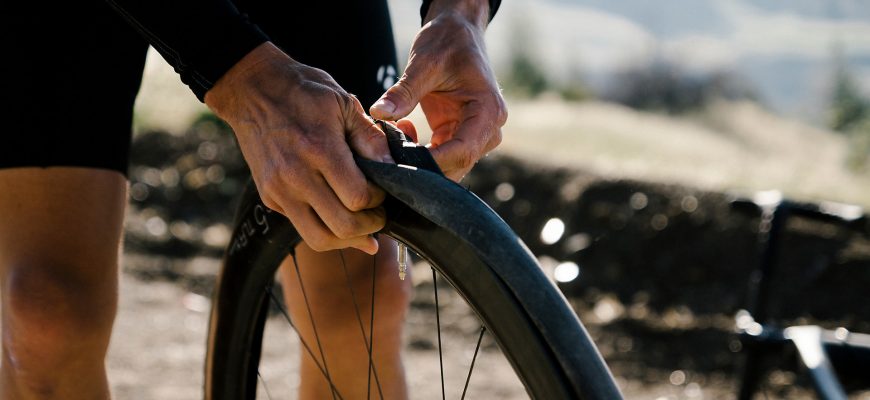 Also, the wobble is much less noticeable.
Also, the wobble is much less noticeable.
Atmospheric pressure is usually measured in pounds per square inch (psi), kilopascals (kPa), or pressure bars (bars).
It is important to note that this is usually not noticeable when the tire is not properly inflated. When you see a flat tire, it means that it is severely underinflated, much more than it should be. An improperly inflated tire can cause many problems, primarily safety related.
1 bar = 14.5037738 psi abs. (= lbf/in² = lbf/in²) 1 bar = 29.53 inHg. 1 bar = 100,000 Pa = 1×10 5 Pa = 1000 hPa = 100 kPa = 100 kN/m² = 1.01972 kgf/cm²
1 bar = 100.000 1.01972 Pa = 2 kgf/cmXNUMX.
Comparison table between psi and bar
| bar | Psi |
|---|---|
| 1 bar | 14. 503773773 PSI 503773773 PSI |
| 2 bar | 29.007547546 PSI |
| 3 bar | 43.5113213104 PSI |
| 5 bar | 72.518868865 PSI |
Transducer
| LENGTH | AREA | |
|---|---|---|
| WEIGHT | = 1.0197 kg/cm² | |
| 1 kg | = 2.205 pounds | = 14.5 psi Inch |
| 1 kg | = 35.27 oz | = 1 N/m² |
| 1 t | = 1000 kg | = 0.145 psi Inch |
conversion table: bar/psi
| bar (bar) | Pounds per square inch (psi) |
|---|---|
| 1 bar | 14.504 PSI |
| 2 bar | 29.008 PSI |
| 3 bar | 43.511 PSI |
| 4 bar | 58. 015 PSI 015 PSI |
PSI, or pounds per square inch, measures the amount of pressure applied over an area of one square inch.
In Michelin, for example, if we look at the most common tube tires 29×2.25, the pressure they take is 1.8 to 4 bar (29 to 58 psi), while Continental to the same extent and similar tires are 3.5 to 4.5 bar (50 to 65 psi).
For example: "26×1.5 45-60" psi means that this wheel has a rim diameter of 26 (in) and a width of 1.5 (in) and the recommended air pressure is between 45 and 60 psi.
Due to the recent explosions of gasoline, we do not have time to waste even one drop of hydrocarbon, so you should consider that experts in this field agree that: up to 13, from 26 to 14, from 28 to 15, from 30 to 16 and from 35 to …
A trekking bike is a bike designed for more or less long raids and is a very popular discipline today: it allows you to ride alone or with several people for a day, a week or several months on various terrains.
Air pressure in bicycle tires is one of the most underestimated parameters, which, as practice shows, is often neglected by many inexperienced riders. Under-inflated or, conversely, over-inflated bicycle wheels significantly affect the riding characteristics of the bike, contribute to accelerated wear of rims and tires, cause discomfort, and in some cases, emergency situations. That is why maintaining the optimal pressure in bicycle tires is an important component of comfortable and safe movement for every cyclist.
Proper tire inflation depends primarily on the class of the bike and, accordingly, the specifics of the rubber with which it is equipped. For example, for road bikes, this figure will be significantly higher than for mountain bikes and road bikes.
Bicycle tire manufacturers always indicate the recommended pressure range on their products. For non-professional riding, the wheel should be inflated with an orientation towards the average value from that indicated on the product. This marking is located on the side of the tire, and it can use different units of measurement. Usually these values are specified in three values:
For non-professional riding, the wheel should be inflated with an orientation towards the average value from that indicated on the product. This marking is located on the side of the tire, and it can use different units of measurement. Usually these values are specified in three values:
The recommended pressure range for most mountain and city bikes is between 2.3 and 4 atmospheres (35-60 psi), for road bikes it is higher - from 6.4 to 9.1 atmospheres.
For people who are just getting started with cycling, adjusting tire pressure is often a problem. In this case, it is recommended to use either pumps with a pressure gauge or a stand-alone pressure control device. Having learned by eye to determine the optimal degree of inflation of the wheels in the future, you can do without additional devices. Also, every cyclist can always get to the nearest gas station or car service station, where it is usually possible to measure pressure and pump up for a minimum amount, and more often for free.
Having learned by eye to determine the optimal degree of inflation of the wheels in the future, you can do without additional devices. Also, every cyclist can always get to the nearest gas station or car service station, where it is usually possible to measure pressure and pump up for a minimum amount, and more often for free.
When preparing the bike for the ride, you do not need to be afraid to pump the wheel. The upper pressure limit for most tires is quite high. But, nevertheless, you should not overdo it in this matter, because. you can harm your comfort while driving.
Over-inflated wheels have less traction, which negatively affects traction and steering response. This is especially noticeable on mountain bikes when riding on dirt roads. Overpressured wheels are less able to absorb small bumps in the terrain and compress impacts when driving over curbs and other natural obstacles.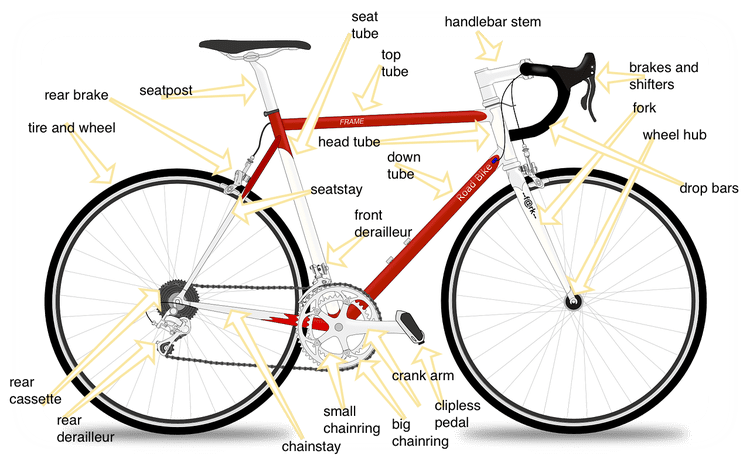 When driving on asphalt, over-inflated tires wear out faster, which causes premature tire changes.
When driving on asphalt, over-inflated tires wear out faster, which causes premature tire changes.
Riding on under-inflated tires can cause more problems for both the rider and the bike. In this case, the likelihood of tube punctures increases several times, and insufficient shock compression often causes damage to the rim and the formation of eights. A poorly inflated tire on an asphalt road is subject to even more wear than an over-inflated one. Also in this case, rolling resistance is significantly increased, which worsens the roll and makes the cyclist spend more energy in the process of riding. And, finally, low tire pressure can lead to extremely unpleasant and emergency situations, when the tire breaks off the front wheel and the chamber bursts on sharp turns. These incidents almost always involve falls and severe rim damage requiring costly repairs.
The wheels of road bikes are pumped up to 6. 4-9.1 atmospheres. This is due to their specifics: a smaller volume of air in the chamber and features of contact with the surface. By choosing the average value from the tire indicated on the sidewall, you will ensure driving comfort, excellent rolling and be safe from force majeure situations associated with improperly inflated wheels.
4-9.1 atmospheres. This is due to their specifics: a smaller volume of air in the chamber and features of contact with the surface. By choosing the average value from the tire indicated on the sidewall, you will ensure driving comfort, excellent rolling and be safe from force majeure situations associated with improperly inflated wheels.
Due to the larger volume of air in the chamber, the pressure in the mountain bike tires is controlled within 2.3-4.08 atmospheres. To achieve optimal pumping performance, the preferred riding style is taken into account. If you are a fan of aggressive riding on rough terrain, with broken primers, potholes and other natural obstacles, stick to the average pressure settings indicated on the tire. Cyclists who use mountain bikes for moderate city riding and groomed paths can safely inflate the wheel to the upper limits prescribed in the marking.
In the case of road bikes, things are much simpler. They are always inflated to the maximum values specified by the wheel manufacturer.